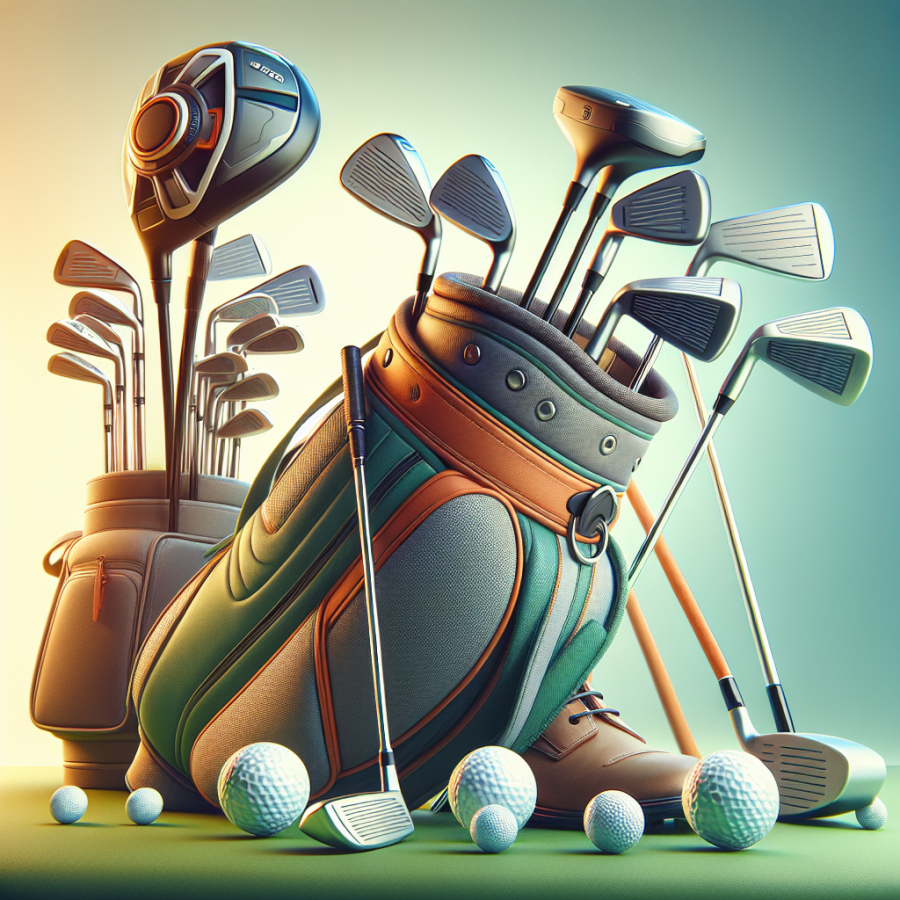Making the Right Club Selections for Your Golf Game
Golf is a sport that requires precision, strategy, and the right choice of clubs. Whether you are a beginner learning the ropes of the sport or a professional trying to finesse the game, making the right club selections can significantly improve your performance on the golf course.
An understanding of the different types of clubs and their purpose is fundamental to optimizing your golf game. Standard sets consist of woods, irons, wedges, and putters, and each group serves a distinct purpose in different situations.
Woods, which include drivers, are designed for long-distance shots such as the tee shot. They have larger rounded heads and longer shafts, which allow you to hit the ball farther down the course. If you're on a par-5 or long par-4 hole, using woods is typically the best because they are designed for this purpose. A 3-wood or 5-wood can also be helpful for fairway shots that need some distance.
Irons, on the other hand, come in a variety of sizes, denoted by numbers, typically ranging from 1-9. The lower numbers (1-4), also referred to as long irons, are meant for distant shots, but they require more skill and precision. Higher numbers (5-7), termed mid-irons, are versatile and used for a wide range of shots. Short irons (8-9) along with pitching wedges, are ideal for shorter, high-altitude shots and getting the ball onto the green from distances of 150 yards or less.
Wedges have even higher lofts than irons and are used for even shorter and high-altitude shots. They are also used extensively for chip shots and getting out of bunkers. Pitching wedges, sand wedges, and lob wedges each serve different purposes and understanding when to employ each one can enhance your performance.
Putters, as most people probably know, are used mainly for making short and low-speed strokes with the aim of rolling the ball into the hole from a short distance away. They come in a variety of styles, and choosing the one you're most comfortable with is crucial because each hole will end with putting.
Hybrid clubs can offer you a mixture of the long-distance capabilities offered by woods and the easier-to-hit advantages of irons. Hybrids can be easier to handle for some people, especially players with high handicaps.
Read also:
Mastering the Art of Hunting: A Comprehensive Guide for Beginners
Understanding the Purpose and Use of Different Golf Clubs
Golf, unlike many amateur sports, requires an extensive array of tools with a variety of golf clubs serving different purposes within the game. Knowing when to use which club not only improves your accuracy but also the distance you can cover with each stroke.
One thing that may have puzzled many beginners is the traditional numbering system for golf clubs. The numbers stamped on each club refer to the loft, or the angle at which the clubhead's face is set. The lower the number, the lower the loft and the longer the distance the ball is likely to travel. Here, we delve into details of each golf club to help you decipher which you need for each situation during the game.
Drivers, often titled as the 1-wood, are the largest clubs in a golfer's bag and are primarily used on the tee for long-distance drives. They're designed for the longest shots and typically used for par 4 and 5 tees.
Next, we have fairway woods, traditionally known as the 3-wood and 5-wood. They are versatile clubs designed for long shots on the fairway, but they can also serve a great purpose off the tee on a short par 4 or for reaching a par 5 in two shots.
Hybrid golf clubs, as the name suggests, combines the elements of both woods and irons. These are great alternatives to long irons and fairway woods and provide more loft for longer and higher shots.
Irons, numbered 1 to 9, target distances from 200 yards (for a 1-iron) to 150 yards (for a 9-iron). However, most sets of clubs do not include a 1- or 2-iron, as they're quite difficult to hit accurately. Irons are chosen based on both the distance to the hole and the strategy for the next shot.
Wedges offer the highest loft in the game and are often used for close range precision shots, to escape from sand traps, or to lob a shot over an obstacle. They are perfect for shots that require high accuracy rather than distance.
Finally, the putter is the club used most frequently during a round and is intended for use on or near the green. Putters come in various design styles, but they're all designed to do one thing - help the golfer make a precise shot into the hole with a gentle tap.




